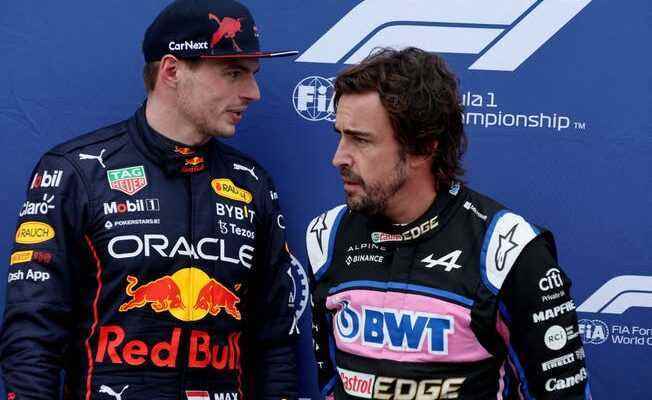In view of the global boom, the racing teams are currently earning more than ever before. A salary cap would further increase income – but the racers are fighting back.
Max Verstappen (left) thinks the upper salary limit is wrong – Fernando Alonso (right) wants to demand the right to hire more of his own sponsors.
So far, savings rounds have not necessarily been associated with the billion-euro Formula 1 business. The capitalist rule of three of the premier class of automobile racing was always: ever faster, ever more complex, ever more expensive.
But the changing social and economic conditions, driven by inflation and changing values, have also reached Grand Prix racing. With a consequence that was unthinkable until recently, the ten racing teams have embarked on a course of reason in order to ensure financial survival while at the same time achieving greater sporting equality.
The teams’ upper budget limit is currently $140 million, and will be reduced by another $5 million next year. However, if you look at the fine print, you will quickly see the many exceptions: neither engine nor travel costs, marketing expenses and salaries of the top three people in each team are included, let alone the drivers’ fees.
Only the top three teams reach the budget limit
This fee for the racers sparked a new conflict ahead of the Canadian Grand Prix (race ended after this issue went to press). If possible, a salary cap for the drivers should be introduced as early as next year, with the limit being 30 million dollars for both drivers of a team.
So far, only the three top teams Red Bull Racing, Mercedes and Ferrari are likely to reach or even exceed this limit. With an estimated 40 million, Lewis Hamilton is considered the best-earning racing driver, Max Verstappen should receive about the same amount with his contract renewed after winning the title, Charles Leclerc is close to 30 million. But the majority of drivers would be happy to reach a double-digit million sum. Newcomers are often left with only one million; some even have to bring money with them.
Accordingly, it is a luxury problem. However, one that can be used populistically. The racing teams have also recognized this. In view of the worldwide Formula 1 boom, the teams are earning more money than ever before, since more is left over from sponsorship money and profit-sharing than can actually be put into the cars. Sebastian Vettel also considers the suggestion of a salary cap to be a “funny coincidence”, the four-time world champion said with a sarcastic undertone.
The defending champion Max Verstappen defends himself with greater aggressiveness, just like on the track. The Dutchman considers the top wage to be appropriate because the drivers would put on the show and risk their lives: “The limit is totally wrong.”
The Mercedes governor, Toto Wolff, counters this with the logic of growing cost pressure and proportionality. He considers the current top salaries to be “unsuitable”. He could also draw a comparison with the top Mercedes boss Ola Källenius, whose salary is around 6 million. But Wolff is clever enough to demand a cap for the managers of the racing teams in the future.
A restriction means, at least in theory, that smaller racing teams could also afford top drivers. But more than half of the teams are already below the upper salary limit. Günther Steiner from Haas-Ferrari says: “My problem is not the budget limit, my problem is the budget.” However, he is also open to borrowing from US professional sports, where a salary cap is common for professionals.
Up until now, the marketing rights have largely rested with the teams
One of the best counter-arguments of the racing drivers is the reference that they have had to hand over almost all marketing rights to their teams and the Formula 1 management. As a result, they would have more and more tasks and deadlines to deal with, but without benefiting from it, as Fernando Alonso says. In the course of new contract negotiations, they would certainly demand more freedom and the right to engage more of their own sponsors. However, the teams could also strive for similar deals and have the driver bonuses paid for by advertising partners, so that these amounts do not even appear in their statements.
A major problem with the implementation of the desired restriction, however, is that the contracts of most top earners will run until at least 2024 and are unlikely to be contestable. However, the desired signal effect was already achieved through the discussion alone. Racing will always be about profits.
